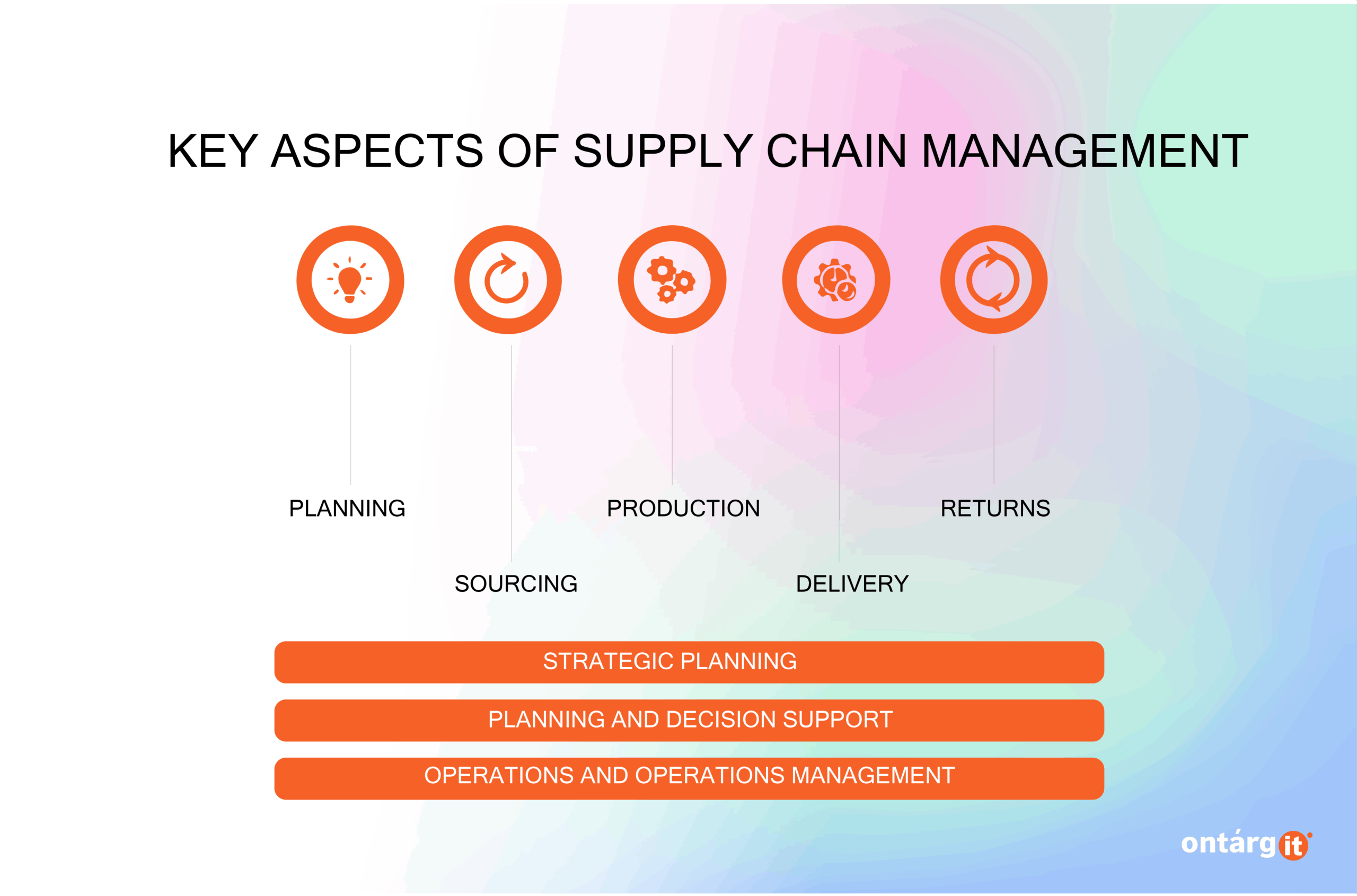Supply Chain Management in 2026. Learn about 7 key principles, modern technologies, and the role of Microsoft Dynamics 365 in building resilient supply chains.
Challenges with the economic recession and geopolitical instability will continue to affect us in the upcoming 2026. This has made businesses think about how they can adapt to the resulting labour shortages, geopolitical and green economic pressure on the supply chain and logistics in general. Simultaneously, the rise of AI and mass-automatization continues, proving that it’s not a temporary trend, but an inevitable need to keep a business afloat.
Considering current events, we can highlight 7 trends and must-have’s for 2026.
Principle 1: Multiple suppliers with wide geographical reach
COVID-19 and later the geopolitical conflicts worldwide were the final nail in the coffin for offshoring. Now we can track the partial relocation closer to the home country, or a preference for supplier diversification. Although that leads to a major problem with managing a variety of suppliers, software like Dynamics 365 is created to handle multi-sourcing channels and tracking of the logistics process. In conclusion, the focus will be on building transparent, technology-powered ecosystems of regionally diversified suppliers, moving away from solely pursuing the lowest-cost global suppliers to embrace more complex but resilient networks.
Principle 2: Heightened attention to cybersecurity
As supply chains become more digital and interconnected, cybersecurity risks are rising sharply, making cyber resilience a strategic priority by 2030. It is not only very disruptive but also a contributed heavily to rising costs. There are serious gaps in cybersecurity methods and logistics is quite overlooked here. For instance, most research looks at how to stop attacks, not how to recover quickly when they happen, which is obviously critical for a real-life situation. Also, blockchain could improve data security and traceability, but it’s still integrated at a low level. Escalating breach costs and risks are pushing cybersecurity from a support function to a core strategic imperative.
Principle 3: AI will do more than only forecasting in 2026
98% of executives now use AI in at least one part of their supply chain (by 2024 Economist Impact), where only 35% use it for forecasting. However, 70% of large-scale organisations will adopt AI-based forecasting to predict future demand by 2030 (by Gartner). However, the other major usage of AI (35%) goes to inventory optimization, and 35% for spotting supply chain risks.
That’s why Dynamics 365 Supply Chain Management is integrated with Microsoft Copilot AI, which besides demand forecasting, already has intelligent inventory optimisation and supplier risk management. In the bigger picture, we can see the shift of AI to be fully autonomous or so-called “touchless”, reducing manual inputs and human intervention. That’s because AI can detect complex patterns, incorporate multiple datasets (internal and external), and extend traditional ways of analysing.

Principle 4: “Just-right” inventories
The old system “Just-in-Time” required keeping as little stock on hand as possible to reduce costs and minimise waste. Although this system depends on stable and predictable supply chains – meaning any disruption is fatal. The Just-Right system is a more balanced solution to both keep enough inventory close but also rely partially on the JIT system. In practice, that means using real-time data and predictive analytics on demand to adjust stock dynamically. Fortunately, the combination of AI and IoT makes this possible.
Principle 5: Transparency and sustainability powered by Dynamics 365
Increasing EU’s deforestation regulation will force companies to have much better visibility deep into their supply chains. “Traceability-by-Design” is planned to be implemented by 2030. The idea is the ability to track the origin, movement, and environmental impact. It’s planned to use a variation of technology, but the key one is space-enabled visibility (includes Earth Observation, IoT) to verify everything—from where raw materials come from to where shipments are going. That will lead to more digitalization and visibility of the processes within the company, where supply chain management software plays the major role in handling it.
Principle 6: Robotics for manual labour, people for analytical work
The rise of AI and labour shortages intersected in 2025 and it couldn’t but affect logistics too. The number of unfilled logistics roles is high – 354,000 in the US according to FRED (information from august 2025). Mostly, employees are pushed into more analytical and skilled-required fields like data analytics, AI trainers, digital twin modelers, robotics maintenance, and are required to have more specialized training to shift from previous roles. Instead, there is a continuous increase of automation and robotization in manual labour and warehouse work to lower labour costs and boost efficiency.
Principle 7: End-to-end digital twins
The digital twin market is expected to continue its rapid expansion, as this technology significantly enhances operational efficiency across complex supply networks. It enables the coordinated management of hundreds of warehouses, diverse suppliers, and real-time data flows, while also allowing companies to simulate potential disruption scenarios before they occur. However, such sophisticated systems often require multiple software platforms to operate simultaneously, which can lead to errors, data inconsistencies, and delays. Microsoft Dynamics 365 provides an integrated solution — consolidating all relevant data within a unified environment to eliminate the cross-integration between different systems and services.
Conclusion
In essence, the supply chain of 2026 will be defined not by a single innovation, but by how effectively organisations integrate these principles—AI, cybersecurity, digital visibility, and human expertise—into a unified, intelligent, and resilient ecosystem. Investing in relevant software that keeps pace with innovation is crucial, and solutions like Microsoft Dynamics 365 enable businesses to make this necessary strategic shift smoothly.

















